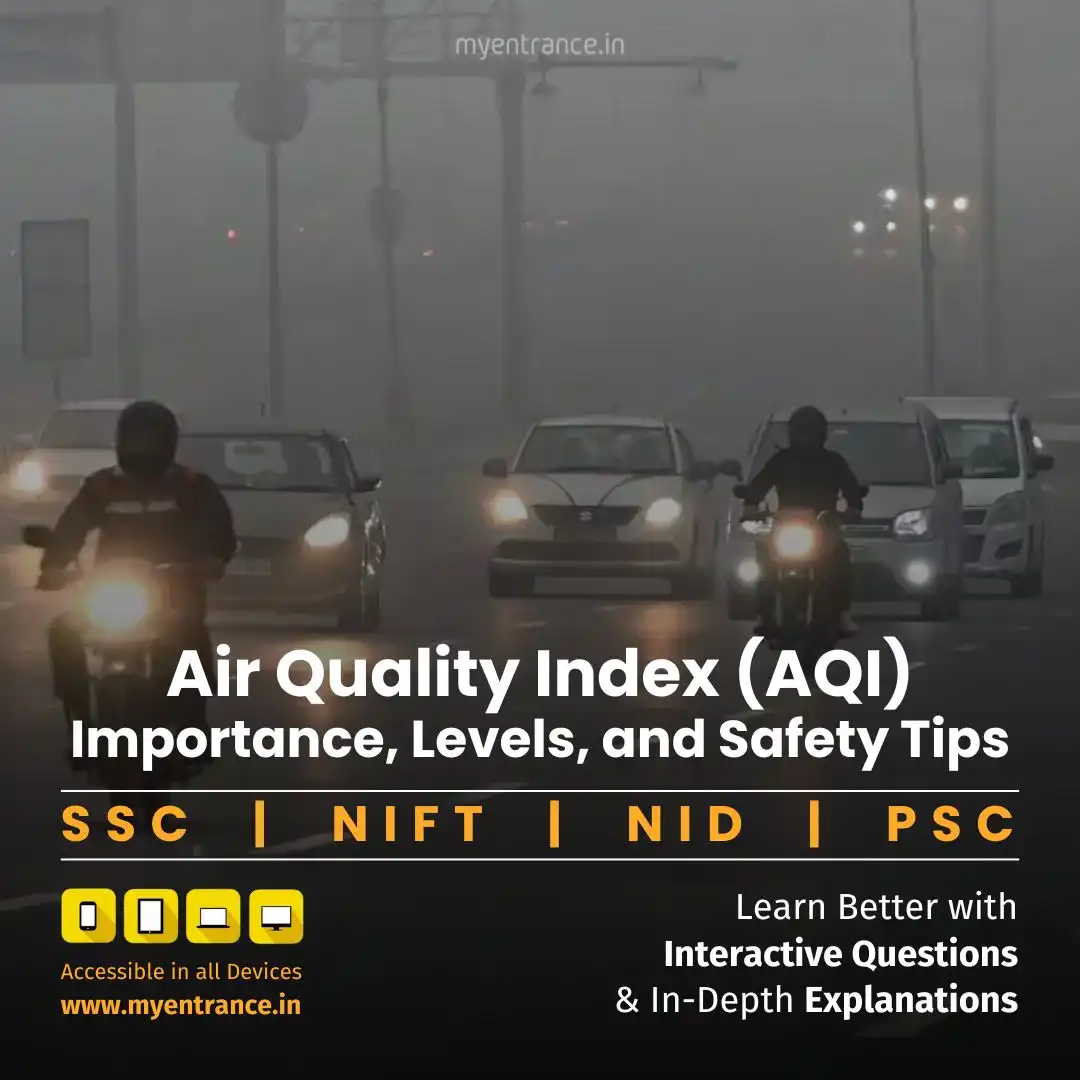Select Language
Air Quality Index (AQI) Explained: Importance, Levels, and Safety Tips
The Air Quality Index (AQI) is a vital tool that measures daily air pollution levels and its potential health impacts. By understanding AQI values, you can take necessary precautions to safeguard your well-being.
What is the Air Quality Index (AQI)?
The Air Quality Index (AQI) is a standardized system used to report daily air quality levels. It indicates how clean or polluted the air is and highlights potential health risks associated with different pollution levels.
AQI measures major air pollutants like ground-level ozone, particulate matter (PM2.5 and PM10), carbon monoxide, sulfur dioxide, and nitrogen dioxide.
It converts complex air quality data into a simple numerical scale (0–500) for easy public understanding.
Higher AQI values mean greater air pollution and increased health risks.
How Does the AQI Work?
The AQI scale ranges from 0 to 500, divided into six categories indicating different health impacts:
0–50 (Good) – Minimal risk; air quality is satisfactory.
51–100 (Moderate) – Acceptable, but sensitive individuals may experience minor effects.
101–150 (Unhealthy for Sensitive Groups) – People with respiratory or heart conditions may be affected.
151–200 (Unhealthy) – Everyone may begin to experience health effects.
201–300 (Very Unhealthy) – Health warnings for all; significant risk for vulnerable groups.
301–500 (Hazardous) – Emergency conditions; entire population may face serious health issues.
Key Points About AQI
An AQI of 100 aligns with the U.S. EPA’s national air quality standard.
Values below 100 are generally safe, while those above 100 indicate worsening air quality.
Sensitive groups (children, elderly, asthma patients) should take precautions even at moderate levels.
Federal Air Quality Standards
The U.S. Clean Air Act mandates the EPA to set safe limits for air pollutants. Two major pollutants monitored are:
1. Ozone (O₃)
Standard: 70 parts per billion (ppb) averaged over 8 hours.
A region violates the standard if the 3-year average of the fourth-highest daily ozone level exceeds 70 ppb.
2. Particulate Matter (PM2.5)
Annual Standard: 9.0 µg/m³ (3-year average).
24-hour Standard: 35 µg/m³ (based on the 98th percentile over 3 years).
Areas exceeding these limits are considered non-compliant, requiring corrective measures.
Sample Questions & Answers on AQI
1. What does an AQI value of 250 indicate?
Answer: An AQI of 250 falls under the “Very Unhealthy” category, meaning everyone may experience serious health effects, and sensitive groups face higher risks.
2. Which pollutants are measured in the AQI?
Answer: The AQI tracks ozone (O₃), particulate matter (PM2.5 and PM10), carbon monoxide (CO), sulfur dioxide (SO₂), and nitrogen dioxide (NO₂).
3. What is the safe AQI range according to the EPA?
Answer: AQI values below 100 are considered safe, while levels above 100 indicate increasing health risks.
4. How is the 8-hour ozone standard calculated?
Answer: The standard is violated if the 3-year average of the fourth-highest daily 8-hour ozone concentration exceeds 70 ppb.
5. Who is most affected when AQI exceeds 150?
Answer: At “Unhealthy” levels (151–200), everyone may feel effects, but children, the elderly, and people with lung/heart conditions are at higher risk.
Most Predicted Questions
Comprehensive study materials, Expert-guided tips & tricks, Mock tests and instant results.
Start your SSC, NIFT, NID, FDDI, PSC journey today with MyEntrance, your ultimate online coaching platform.







